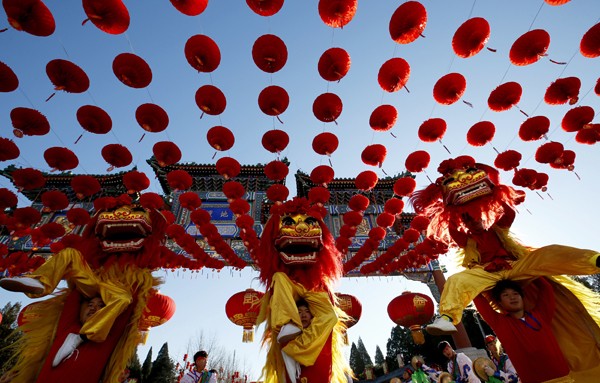Despite the young people's indifference toward ancient traditions, temple fairs remain to be the one true favorite among Chinese people regardless of age during Spring Festival.
Postal Savings Bank of China employee Zhu Changdui who hails from Ankang, Shannxi Province, said what he remembers about the Spring Festival in Beijing when he was a young boy. Zhu remembers going to the temple fairs, watching dragon dance performances, martial arts show, and of course, vendors selling candies and snacks.
However, in recent years, Zhu admits that Spring Festival has not been like those when he was a little boy. In his hometown, Zhu said that his relatives play mahjong in celebration of the Spring Festival.
Zhu said: "However, I think Beijing has preserved a lot of the old tradition and blended it with the new trends."
This year, instead of joining the train rush to go home to his province, Zhu opted to stay in Beijing during the festival. The 28-year-old employee admits that he would like to experience Beijing again during the lunar year, just like when he was a boy. Zhu is looking forward to visiting the temple fairs.
Temple fairs, traditionally called miaohui, can be considered relics of the ancient China. Those were the times when farmers offer yearly sacrifices to their gods. The fairs evolved into marketplaces for merchandise and performances.
Temple fairs became popular throughout the Ming and Qing dynasties (1368-1911). The age-old practice withered away with the establishment of New China in 1949, under the rule of the communists. The practice was totally banned during the Cultural Revolution of 1966, as the practice was considered backward peasant belief.
China revived the temple fair in 1985 at Beijing's Temple of the Earth (Ditan Park). The tradition is now being considered an essential part of the Chinese culture.
Now appreciated for its posterity, evoking imperial times and folk nostalgia, temple fairs are once again important segments of the Spring Festival.




























